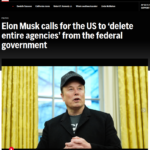Kia Motors and Mojo Mobility have been awarded a funding grant from the U.S. Department of Energy’s (DOE) Office of Energy Efficiency and Renewable Energy (EERE), Vehicle Technologies (VT) program to research and develop a system capable of fast charging an electric vehicle wirelessly. While Mojo Mobility’s existing product line covers wireless charging of mobile gizmos (cell phones, etc) they have developed technology for 20 kiloWatt charging through a wireless connection.
The teams will develop the fast wireless charging technology using a fleet of Kia Soul EV’s. Engineers will be HQ’d at the Hyundai-Kia America Technical Center, Inc. in Superior Twp., Michigan, and Mojo Mobility![]() in Santa Clara, California.
in Santa Clara, California.
The goal is a fast charging system, that connects wirelessly. The first phase is expected to demonstrate more than 85 percent grid-to-vehicle efficiency while charging at over 10 kW. That’s not quite fast charging, though it’s much faster than the 6 kW charging rate we typically get. The second phase will bump the efficiency to 92%, and the third phase will gather real world performance data and test the systems’ durability, interoperability, safety, and performance.
The Mojo Mobility system uses what they call “Near Field Power” technology. Basically, wireless charging involves a sending unit – and a receiving unit. Typically both are coils of wire, and you can think of this as the two halves of a transformer separated by a distance.
One goal in this project is to support misalignment between transmitter and receiver – meaning, it will accommodate variations in parking, rather than forcing the driver to park the vehicle precisely over the transmitter.
- The USA should delete Musk from power, Instead of deleting whole agencies as he demands - February 14, 2025
- Elon Musk, fiduciary duties, his six companies PLUS his political activities - February 10, 2025
- Is there enough Grid Capacity for Hydrogen Fuel Cell or Battery Electric cars? - April 23, 2023
- Is Tesla finagling to grab federal NEVI dollars for Supercharger network? - November 15, 2022
- Tesla announces the North American Charging Standard charging connector - November 11, 2022
- Lightning Motorcycles adopts Silicon battery, 5 minute charge time gives 135 miles range - November 9, 2022
- Tesla Autopilot under US Dept of Transportation scrutiny - June 13, 2022
- Spectacular CNG bus fire misrepresented as EV bus fire - April 21, 2022
- Moldova, Ukraine, Georgia, Russia, and the European Energy Crisis - December 21, 2021
- Li-Bridge leading the USA across lithium battery chasm - October 29, 2021



















Pingback: 2016 Kia Soul EV lowers base price, panoramic sunroof option, has wider availability | The Long Tail Pipe
Pingback: Kia Soul EV can do 100 kW CHAdeMO – the desired charge rate for 200+ mile range EV’s | The Long Tail Pipe